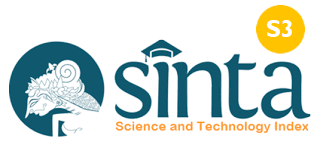Penerapan Model Pembelajaran Kuantum Untuk Meningkatkan Hasil Belajar IPA Siswa Kelas II SD Negeri 4 Pertima
Abstract
This Classroom Action Research aims to describe the process of using quantum learning that can improve student learning outcomes and to analyze improvement in student learning outcomes after the use of concrete teaching aids. Classroom Action Research Procedures are carried out through a grooved process consisting of 4 stages, namely: 1) planning, 2) implementation, 3) Observation, and 4) reflection. From the data analysis it is known that in each cycle there is an increase in completeness of student learning outcomes. In the initial study, students who achieved completeness were only 45%. In the first cycle the number of students who achieved completeness increased by 14% from the initial study to 59% and in the second cycle it increased to 100%. The same thing also happened to the sincerity of student learning. Based on the results of this research data analysis it can be concluded that the use of concrete teaching aids can improve the learning outcomes of Class II SD students in science learning the concept of the main parts of animals and plants.
References
Angkowo, R dan A. Kosasih. 2007. Optimalisasi Media Pembelajaran. Jakarta: Grasindo.
Arends, Richard. 2004. Learning To Teach.6th Ed.New York. McGraw-Hill Co.Inc
Arikunto, S. 2001. Dasar-dasar Evaluasi Pendidikan (edisi revisi). Jakarta: Bumi Aksara.
Arikunto, S. 2003. Prosedur Penelitian. Jakarta: Bumi Angkasa.
Arikunto, S. 2008. Penelitian Tindakan Kelas, Jakarta: Bumi Aksara.
Arnyana, I. B. P. 2005. Pengaruh Penerapan Strategi Pembelajaran Inovatif pada Pelajaran Biologi terhadap Kemampuan Berpikir Kreatif dan Kompetensi Siswa SMA. Laporan Penelitian (tidak diterbitkan). IKIP Negeri Singaraja.
Arnyana, I.B.P. 2007. Buku Ajar Strategi Belajar mengajar. Denpasar : Fakultas Kedokteran Unuversitas Udayana
Belen, S. 2003. Belajar Aktif dan Terpadu. Surabaya: Duta Graha Pustaka.
Bina Tama Raya. 2007. Kurikulum Tingkat Satuan Pendidikan. Jakarta: Bina Tama Raya.
Dahar, R.W. 1996. Teaching Science Through Discovery. New York Macmillan Publishing Company.
Downloads
Published
How to Cite
Issue
Section
License
An author who publishes in the Cetta : Jurnal Ilmu Pendidikan agrees to the following terms:
- Author retains the copyright and grants the journal the right of first publication of the work simultaneously licensed under the Creative Commons Attribution-ShareAlike 4.0 License that allows others to share the work with an acknowledgement of the work's authorship and initial publication in this journal
- Author is able to enter into separate, additional contractual arrangements for the non-exclusive distribution of the journal's published version of the work (e.g., post it to an institutional repository or publish it in a book) with the acknowledgement of its initial publication in this journal.
- Author is permitted and encouraged to post his/her work online (e.g., in institutional repositories or on their website) prior to and during the submission process, as it can lead to productive exchanges, as well as earlier and greater citation of the published work (See The Effect of Open Access).
Read more about the Creative Commons Attribution-ShareAlike 4.0 Licence here: https://creativecommons.org/licenses/by-sa/4.0/.





